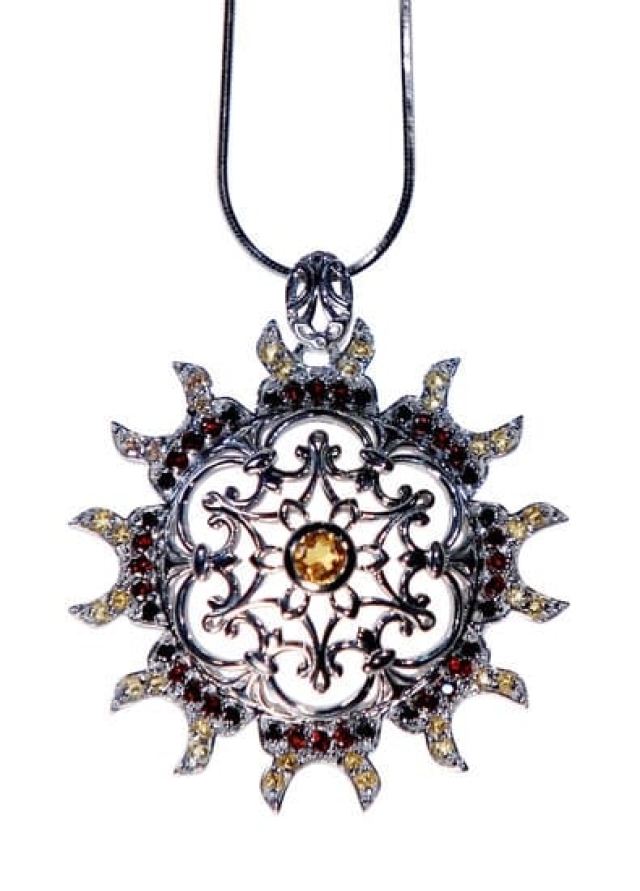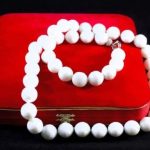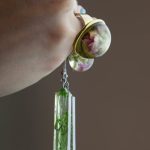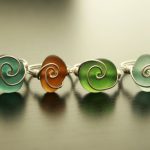Most jewelry and dental materials come with a variety of options, ranging from precious metals such as gold, silver and platinum, to various kinds of synthetic materials. Precious metals are the most common type used in traditional jewelry types and are often seen in bracelets, necklaces, earrings and other forms of body adornment.
More recently titanium and niobium have been added to the list of available choices for jewelry items. In addition to these traditional choices, more modern synthetic materials have also become popular for use in creating unique looks for both fashion pieces as well as dental restorations.
Jewelry Options: From Precious Metals To Synthetic Choices
The main options that today’s consumers have when it comes to jewelry is precious metals such as gold, silver or platinum along with customized laboratory created alloys such as palladium-silver alloys or mokume gane (patterned layered alloys). 18k is the most common form of gold that is used for making jewelry though there are other grades offered such as 10k or 14k depending on the look desired.
Silver can be used in a variety of ways including sterling silver which consists of 92.5% pure silver mixed with 7.5% other metallic composition. Platinum rounds out this trio as its bright white color makes it attractive to many people when designing or shopping for an engagement ring or other kinds of jewelry items made from precious metals.
Dental Material Options: Permanent Structure Changes Until Recently
For dental restorations the material choices were much more limited than those available for creating unique jewelry pieces but have widened exponentially in recent years due to the invention of products like glass ionomer cement, composite resins and ceramic materials.
These new options allow dentists to make subtle changes to teeth structure when creating beautiful smiles instead having to rely on permanent procedures like crowns/caps which limit functionality and require far greater time for cleanings/maintenance visits due to their porosity.
The increase in technology has also allowed more personalized looks so now anyone can get professional looking custom work done without the expense associated with older methods making them far more affordable than ever before.
Precious Metals
Jewelry and dental materials, such as gold, silver or platinum, have been around for centuries. They represent a form of status and wealth in many parts of the world and are often seen as pieces of artwork that tell stories about the people who wear them. Jewelers use precious metals to craft unique pieces that reflect beauty and style.
Dental professionals rely on these metals to make crowns, bridges and other restorations. It is important to know what these materials are made up of in order to distinguish between them and understand their subtle nuances.
Gold is a powerful symbol representing power, elegance and strength. It is strong yet malleable enough to be crafted into an array of shapes for decorative purposes. Gold jewelry ranges from earrings, necklaces and bracelets to rings that can be engraved with special messages or designs.
For dental materials, gold alloys are used since pure metals do not provide enough strength for the intended application. The process begins by mixing small amounts of copper other metals which helps create a more durable product suitable for dentistry use.
Silver is also held in high regard but with its softer qualities it has come to represent purity, innocence and nobility in many cultures worldwide. Silver jewelry makes quite the statement with its almost pure white nature that shimmers gracefully when polished up.
Silver dental material does not have quite the same shine though since it often requires extra finishing processes like buffing or plating for a glossy coat look on it surface structure once completed over a cast gold alloy base part. These techniques provide both durability as well as aesthetic diversity in silver items meant for dental uses such as bridges where titanium has traditionally dominated modern designs today thanks to its superior metal strength properties.
Finally coming onto Platinum this material has become synonymous with ultimate luxury and top tier quality jewellery items due to its rarity in comparison to Gold or Silver variants available along side it. As such only very exclusive high cost items feature Platinum out of the three primary metals listed here – – making everything from classic hoop earrings down right through Crowns require substantially higher fees than your average Gold option might request if you sought same services today.
Dental practices themselves may employ multi-metal plate combinations given high costs surrounding pure Platinum option ; whereas similar effect can be achieved sometimes using Thickened specialized layers ( e.g – Gold+Iridium ) instead , so either way take care when narrowing own individual needs & preferences closely before deciding on jewellery choice made here.
Gemstones and Precious Stones
Jewelry and dental material can be made out of a variety of different materials. From precious stones to pearls, gold, silver and more, these items are produced using a variety of metals and minerals. One of the most popular types of materials used for jewelry is gemstones and precious stones. These natural or synthetic materials come in many forms and each one has its own attributes such as color, rarity and symbolism.
Gemstones are the most commonly used type of basic material in making both jewelry and dental products. Popular varieties include diamonds, rubies, sapphires, emeralds, tanzanite, aquamarine, garnets and topaz to name a few. Each individual stone has its own meaning which makes them special for each person who wears or owns it.
Diamonds for example symbolize love and eternity while rubies represent passion and loyalty amongst others. The rarity of each stone also increases its value especially when it comes to the more expensive varieties such as diamonds which are highly treasured.
Another popular form of jewelry material is semi-precious stones which include peridot, citrine quartz, tourmaline opal and turquoise just to name a few. Although these stones may not have the same level of rarity as gemstones they usually provide beautiful color variations that add something special to pieces made from them.
Semi-precious stones have their own meanings too although they aren’t quite as traditionally known as that of gemstones so they create unique meanings for each person depending on their personal desires or needs such as finding inner peace or strength through whatever stone they choose to wear or use in their designs.
Pearls are also considered a type of precious jewelry material although they are actually technically organic matter secreted by certain mollusks found in saltwater as well freshwater around the world.
These jewel like objects often come in white but are also available in pastel shades including pink and purple roses grown today but they were once only found naturally in nature before modern oyster farming methods allowed other colors to be grown too going beyond what was naturally available by Mother Nature herself.
They symbolize purity innocence; however unlike gemstones this holds more sentimental value when worn rather than monetary worth due its less common availability hence why it’s classed separately with semi-precious again providing an opportunity for individualized desiring style.
Synthetic and Non-Precious Metals
When it comes to jewelry and dental work, there are many different synthetic and non-precious metals used to complete the design or restoration. Synthetic and non-precious metals such as stainless steel, aluminum, nickel alloys, cobalt chromes and titanium alloys are commonly used in jewelry pieces, due to its common availability at an affordable price.
The composition of these metals depends on how they are used. For example aluminum is usually formed with combinations of zinc, copper and magnesium while nickel alloys may contain various types of nickel, iron and cobalt.
Stainless steel is the most popular metal used in jewelry due its resistance to corrosion. It is composed primarily of iron with chrome added to increase strength, giving it an attractive finish while preventing tarnish.
Stainless steel jewelry pieces can come in a range of finishes including polished silver-tone or blackened copper-like finishes for a unique look. Titanium alloys are incredibly strong but lightweight materials that make excellent choices for larger statement pieces like necklaces or rings with intricate designs.
Cobalt chrome alloy is another choice for luxury jewelry pieces because of its hardness, corrosion resistance properties and bright white coloration that resembles gold or platinum. Cobalt chrome is often combined with other rare elements such as molybdenum or zirconium to create an even harder alloy for long lasting wearability.
Dental materials often require more durability due to their frequent use so the combination of high purity gold or palladium with diamond particles often works best when producing restorations such as crowns and bridges.
The material must also be biocompatible which means it must be hypoallergenic, inert (not reacting fully), wear resistant and easy to clean so gold because of its bioinert properties has become a reliable option taking away the need for nickel based alloy restorations which may be harmful over time due their release of nickel into the saliva during use.
Porcelain and Ceramics
Jewelry and dental materials are made of a variety of different materials, including porcelain and ceramics. Porcelain is a hard, white semi-opaque ceramic material that is made from a special kind of clay called kaolin. This kind of clay allows the porcelain to be fired at very high temperatures, creating a dense form that can withstand impacts and scratches better than any other materials used in jewelry or dentistry.
Porcelain also has natural translucence that makes it extremely aesthetically pleasing. As such, it has become increasingly popular in the jewelry industry for use in rings, necklaces, watches and countless other accessories.
Ceramic is another type of material used in both jewelry making as well as dentistry. Ceramic is not as hard or dense as porcelain though it has similar visual characteristics.
In fact, because it is not fired at very high temperatures like porcelain and therefore contains fewer impurities due to its manufacturing process; many people find ceramics to have a more attractive appearance than porcelain when crafting jewelry and dental items. The same translucence found in porcelain can be achieved with ceramic, but with even more variety in color options – often being shades of blue, green or yellow.
In addition to having a subtle opaqueness that brings out its beauty in certain application, one advantage of using either porcelain or ceramics for jewellery or dental merchandise is that these materials will resist heat expansion better over time than most metals will – meaning your item will stay looking beautiful even after years of use.
This makes them ideal for craftsmanship projects where longevity is key factor; both materials are also relatively lightweight compared to some other jewellery materials such as silver or platinum which allows them to be worked into intricate costumes designs with ease.
Last but definitely not least – all forms of ceramic material have excellent resistance to corrosion so this can give shoppers peace of mind when investing their dollars in certain pieces.
Crafting Techniques
Jewelry and dental materials are typically made out of a variety of different materials such as precious metals like gold, silver, and platinum. Precious stones such as diamonds, rubies and emeralds may also be used. There are many different crafting techniques used to create these kinds of jewelry and materials.
Engraving is one common technique that is used to create beautiful pieces of art or decorative designs by carving lines into the surface of a material. This can range from a simple etching pattern to elaborate sculpted artwork customized for individual clients.
Casting is another popular method for creating pieces of jewelry or dental materials. A mixture of molten metal is poured into a mold which takes on the shape prescribed by the craftsperson. This technique allows jewelry makers to form shapes not achievable with other methods as well as allowing for mass production using replicated molds for each piece created.
The use of soldering is also commonly employed in jewelry making, providing permanency to attachments between components such as rings and clasps or jump rings connecting pieces within the same piece of jewelry. Soldered connections can provide added strength at points where pressure would otherwise cause failure along with aesthetic beauty in some instances where the final product should exhibit visible lines at connections between components on its surface rather than being concealed beneath them.
As well as these traditional crafting techniques there are also new kinds with emerging technologies such as 3D printing and CNC milling being employed more often in modern times where computer aided design allows complex shapes and forms within pieces custom designed by customers. Such advancements allow more intricate jewellery designs than ever before while still preserving traditional styles desired by those purchasing finished products for themselves or gifts for friends and family alike.
Alternatives
Jewelry and dental materials can be made from a variety of traditional and alternative materials. The two most popular metals used to make jewelry today are gold and silver, which provide a number of advantages for durability, strength, luster and beauty. Jewelers may also use rank, white or yellow gold alloys with other metals to give jewelry a unique look.
Plated silver, copper or rhodium are also popular choices for making jewelry due to cost considerations. Other commonly used precious metals in jewelry making include palladium and platinum.
On the other hand, non-traditional alternatives such as wood, bone, horn or seeds can be even more affordable and provide an interesting artistic look that is often one of a kind or unique. Wood can have some natural properties (such as grain patterns) that can give an extraordinary style to a piece of jewelry that cannot be found using precious metals or stones.
Bone and horn can also create unique pieces of jewelry that offer their own distinctive charm depending on the shapes and designs incorporated into the jeweler’s products. Finally, beads made from seeds such as coconut may also offer a very attractive rustic texture combined with different colors depending on the type seed used to produce them.
These alternatives options offer many creative possibilities for making custom designed jewelry pieces including necklaces, earrings, bracelets, chokers as well as body piercings or hair clips. Although not capable of producing items at the same level of durability than those made from precious metals like gold or silver; these alternatives still feature interesting color variations along with beautiful textures which are quite hard to replicate with expensive materials like precious metals.
As these type materials become increasingly more accepted within mainstream markets; it would not be surprising if more jewelers embrace them in their products offerings in order to increase the creativity within their products ranges while reducing material costs without compromising quality standards.
Shopping Tips
Jewelry and dental materials come in a variety of forms, so it can be difficult to know what material is the best for a particular design. When making jewelry and dental pieces, the goal is to select a material that will stand the test of time and maintain its beauty over its lifetime.
Understanding what kind of materials are available, answer some questions about your design, and consider the design goals can give you valuable insight into which jewelry or dental material will make your creation shine.
Designers typically start by selecting precious metals such as gold, silver, platinum or palladium. These pre-refined metals possess properties that enhance their value and longevity-such as malleability (ability to be easily formed), ductility (how well they stretch without breaking) or corrosion resistance. Gold is the most malleable metal while silver is highly resistant to corrosion but easily scratches-while platinum and palladium serve as strong alternatives due to their malleability.
Gems are fourth when considering materials for a jewelry or dental piece. Certain stones have properties beyond aesthetics (shape and color) that may be beneficial depending on the design intent like hardness, durability, vibrancy of color or ability to dispatch heat efficiently/effectively.
Sapphires are one of these such gems since they are known for their strength in addition to vibrant hues; rubies and diamonds are among the hardest natural substances on Earth. Because gems come with higher prices per carat (and depending on size availability), you’ll want to shop around before settling on any one gemstone for your project.
Finally, if you’re looking to add another touch of luster or shine to your jewels or dentals-you’d do well to use precious set wire beads and pearls along with enameled metal accents. They’ll help create more intricate details through decoration which also bring out beautiful effects in coloration that may fuel just enough motivation needed complete any special project you have in mind.
With so many options available between metal types and gemstones plus accessorizing elements like set wire beads or enameled metal accents – the right choice of materials can make all the difference between an average item versus an extraordinary masterpiece.

Welcome to my jewelry blog! My name is Sarah and I am the owner of this blog.
I love making jewelry and sharing my creations with others.
So whether you’re someone who loves wearing jewelry yourself or simply enjoys learning about it, be sure to check out my blog for insightful posts on everything related to this exciting topic!





